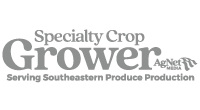By Clint Thompson
Alabama farmers are on the cusp of another spring planting season. However, the same challenges that have existed the past several years could once again challenge profit margins this season, says Adam Rabinowitz, Alabama Extension economist.

“The big concerns going into 2025 are certainly on inputs of production that still remains pretty high and a lot of uncertainty with respect to policies that affect farmers; especially with a new administration. These are questions in terms of labor and trade issues and also just the fact that we don’t have a farm bill that we’re already on a second extension for,” Rabinowitz said.
Input Expenses
Rabinowitz said input expenses leveled off over the past year, though they have not decreased back to pre-Covid levels.
“It has leveled off over the last year and what we’re expecting this year, but there’s not any expectation that they’re going to come further down,” said Rabinowitz. “We talk about input prices, but we also need to talk about the price of commodities. At the end of the day, it’s about the margin, the difference between that price and those costs. That’s where the margin has shrunk.
“If you talk about row crops, commodity prices are just down. There’s no increase that’s expected of anything significant to make up that gap.”
Farmers’ most expensive costs vary on what crops they produce. Row crop producers are different than fruit and vegetable growers.
“If we’re talking about row crops, then definitely the fertilizer and seed chemical costs are going to be a big cost. If you start getting into some of the specialty crops, fruits and vegetables, then labor costs are certainly a big issue,” Rabinowitz said. “All of these really come back to questions in terms of what happens in the future and on ag policy. When we start talking about immigration policy that’s ultimately going to affect labor for agriculture.
“When we talk about some of the trade policies, that could affect some of those input costs, especially on fertilizer.”










